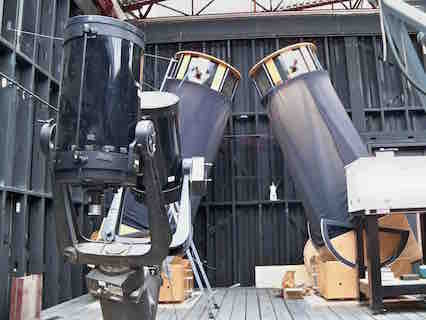LIDAR (LIght Detection And Ranging) is similar to RADAR, uses electromagnetic waves in the visible or near-visible spectrum to remotely investigate properties of a medium.
There are several types of Lidar:
- DIAL Lidar (Differential Absorption Lidar)
- Flourescence Lidar
- Mie (Aerosol) Lidar
- Raman Lidar
- Rayleigh Lidar
The USU Na lidar is a narrowband resonance fluorescence Doppler lidar system operating at the Na D2 linewith a 120 MHz full-width half-maximum laser pulse bandwidth. The Na lidar is currently set up to probe the mesopause region simultaneously in three directions (north, east, and west) during the night and in two directions (north and east) during the daytime using a pair of Faraday filters [Chen et al., 1996] to obtain high-resolution temperature and horizontal wind profiles, along with Na density profile. It provides the critical atmospheric information throughout a full diurnal cycle of observations of the mesopause region, such as tidal and planetary wave variations [She et al., 2004; Yuan et al., 2013] of all the lidar measurements.


